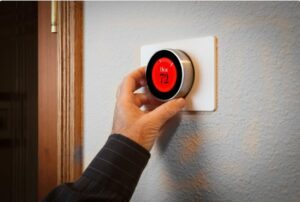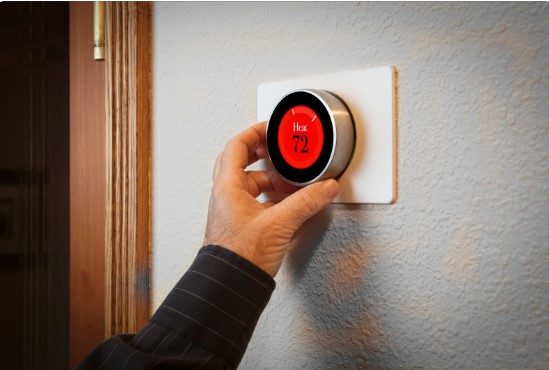 As the colder months approach, keeping our homes warm becomes a top priority. While turning up the heating may seem like the obvious solution, it can be costly and environmentally unfriendly. Luckily, there are several simple and effective ways to make your house warmer without relying solely on heating systems. In this article, we will explore some practical and eco-friendly methods to create a cozy and warm atmosphere in your home during the chilly winter months.
As the colder months approach, keeping our homes warm becomes a top priority. While turning up the heating may seem like the obvious solution, it can be costly and environmentally unfriendly. Luckily, there are several simple and effective ways to make your house warmer without relying solely on heating systems. In this article, we will explore some practical and eco-friendly methods to create a cozy and warm atmosphere in your home during the chilly winter months.
1. Maximize Natural Sunlight
One of the easiest and most cost-effective ways to warm up your home is by utilizing natural sunlight. Not only does sunlight provide warmth, but it also has the added benefit of brightening up your space and creating a welcoming ambiance. So, how can you make the most of the natural light in your home?
Firstly, open up your curtains and blinds during the day to let sunlight stream in. This simple action can significantly increase the amount of light and warmth in your home. Consider investing in sheer or light-colored curtains that allow more sunlight to pass through while still providing privacy. By letting in as much sunlight as possible, you can take advantage of its natural warmth and reduce the need for artificial heating.
Secondly, think about rearranging your furniture to maximize exposure to sunlight. Place your seating areas, such as sofas and chairs, near windows where sunlight is most abundant. Not only will this help to warm up those specific areas, but it also allows you to enjoy the beautiful view outside while basking in the sunlight. You can even consider adding reflective surfaces, such as mirrors or glass tables, to further enhance the distribution of natural light throughout your space.
In addition to adjusting your interior, it’s essential to consider the exterior of your home as well. Take a look at the outside of your windows and identify any obstacles that may be blocking the sunlight from entering your home. This could include trees, bushes, or other structures. By removing or pruning these obstacles, you can allow more light to penetrate your windows and provide warmth and brightness to your living space.
To illustrate the benefits of utilizing natural sunlight, let’s consider an example. Imagine you have a cozy reading nook in your living room, but it tends to be cold and dim during the winter months. By following the tips mentioned above, you can strategically position your reading nook near a large window that receives ample sunlight. This will not only warm up the space but also create a well-lit and inviting environment for you to curl up with a book.
2. Use Insulating Window Treatments
Windows are a significant source of heat loss in homes, making it crucial to find effective ways to retain heat inside. One of the most efficient methods is to install insulating window treatments, such as thermal curtains or blinds. These treatments act as a barrier, preventing cold air from seeping in and warm air from escaping, ultimately reducing the amount of heat lost through the windows.
When choosing insulating window treatments, it is important to consider the material and thickness. Thick, heavy fabrics like wool or thermal-lined curtains are ideal for optimum insulation. These fabrics provide an additional layer of insulation, helping to trap the warm air inside and keep the cold air out. By investing in these types of curtains, homeowners can significantly reduce heat loss through their windows.
In addition to using insulating window treatments, it is also essential to ensure that windows are properly sealed. Even with the most effective curtains or blinds, drafts can still occur if there are gaps or cracks around the windows. These drafts can allow cold air to enter the home and warm air to escape, counteracting the insulation provided by the window treatments. To prevent this, it is important to regularly check and maintain the seals around windows, making sure they are intact and free from any gaps or cracks. This simple step can help minimize drafts and maintain a warm interior.
To illustrate the impact of insulating window treatments and proper sealing, consider this example: Imagine two identical rooms with windows that are not properly insulated or sealed. In one room, thermal curtains are installed, while in the other room, no insulating treatments are used. During the winter months, the room with the thermal curtains will retain much more heat, as the curtains act as a barrier against the cold air outside. On the other hand, the room without insulating treatments will experience significant heat loss through the windows, resulting in a colder and less comfortable living environment.
3. Seal Drafts and Air Leaks
Drafts and air leaks are two of the main causes of heat loss in homes. These gaps and cracks can allow cold air to enter and warm air to escape, making it more difficult to maintain a comfortable temperature indoors. One effective way to combat this issue is by identifying and sealing any gaps or cracks around windows, doors, and electrical outlets.
One easy and affordable method for sealing these gaps is by using weather-stripping or caulk. Weather-stripping can be applied to the edges of windows and doors to create a tight seal and prevent air leakage. Caulk, on the other hand, can be used to fill in any cracks or gaps in walls or around electrical outlets. By taking the time to carefully inspect these areas and apply weather-stripping or caulk where necessary, homeowners can make a significant difference in reducing heat loss.
It is also important to pay attention to areas where different materials meet, as these are often prone to leaks. For example, the area where a window frame meets the wall or where a door frame meets the floor can be common sources of drafts. By carefully inspecting these areas and applying weather-stripping or caulk, homeowners can further minimize heat loss and create a more energy-efficient home.
In older homes, additional measures may be necessary to prevent cold air from entering under doors. One effective solution is to use door snakes or draft stoppers. These are long, fabric tubes that can be placed at the bottom of doors to block drafts and keep cold air out. Door snakes and draft stoppers are easy to use and can make a noticeable difference in keeping the heat inside and the cold air outside.
By taking the time to identify and seal gaps and cracks around windows, doors, and electrical outlets, homeowners can significantly reduce heat loss in their homes. This not only helps to create a more comfortable living environment, but it also helps to reduce energy consumption and lower heating bills. So, whether you choose to use weather-stripping, caulk, or door snakes, sealing these gaps is a simple and effective way to keep your home warmer and more energy-efficient.
4. Utilize Insulation
Ensuring that your home stays warm is of utmost importance, and proper insulation plays a vital role in achieving this. Take the necessary steps to insulate your attic, walls, and floors to prevent any precious heat from escaping. It’s essential to regularly check the insulation in your attic and, if needed, add more. This is because heat has a tendency to rise and find its way out through the roof. You can also consider adding insulation to your walls, either by seeking professional help or by opting for insulating wallpaper. Moreover, placing carpets or rugs on uncarpeted floors not only adds a cozy touch but also provides an additional layer of insulation. This way, not only will your feet stay warm, but you’ll also minimize heat loss through the floorboards.
5. Harness the Power of Thermal Mass
When it comes to maintaining a comfortable temperature in your home, thermal mass is a key factor to consider. Thermal mass refers to materials that have the ability to store and slowly release heat. By incorporating materials like brick, stone, or concrete into your home’s design, you can take full advantage of this property. These materials are able to absorb heat during the day and then release it during colder periods, helping to keep your indoor temperature stable and cozy. To make the most of thermal mass, focus on using it in areas that receive direct sunlight, such as floors, walls, or countertops. This way, you can maximize its effectiveness and enjoy a more comfortable living environment.
Conclusion
Creating a warm and cozy home doesn’t always require heavy reliance on heating systems. By implementing these practical tips, you can significantly improve the warmth and comfort of your living spaces while reducing energy consumption. Maximize natural sunlight, install insulating window treatments, seal drafts and air leaks, utilize proper insulation, and harness the power of thermal mass. Remember, it’s important to combine multiple approaches to achieve the best results. By adopting these eco-friendly methods, you can enjoy a cozy, warm home throughout the winter months, all while being mindful of your carbon footprint and saving on energy costs. Stay warm and comfortable while contributing to a sustainable future.
